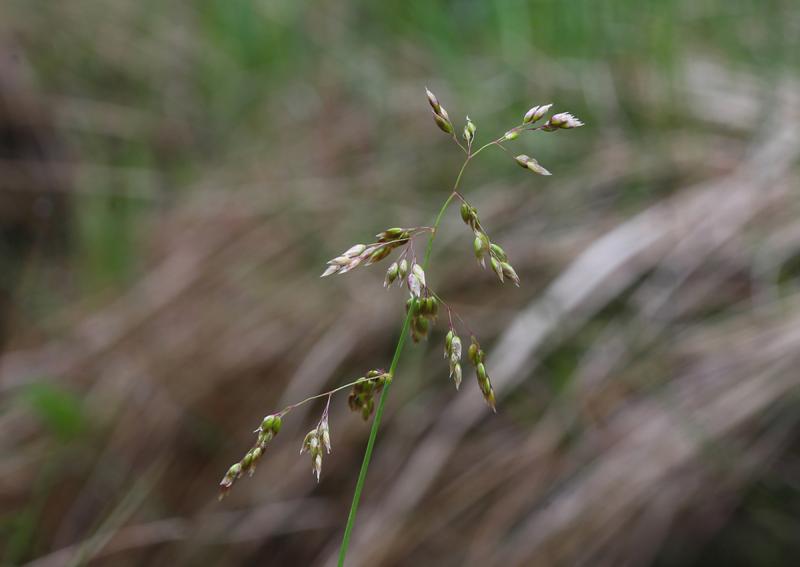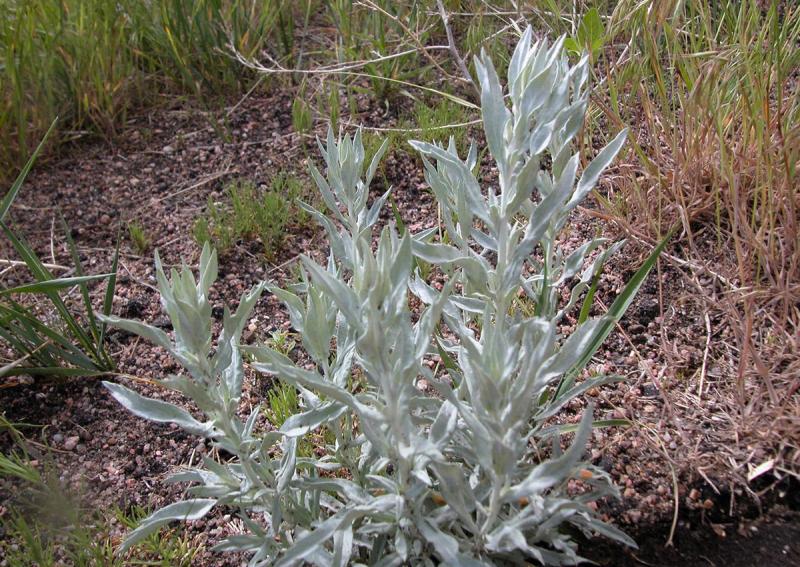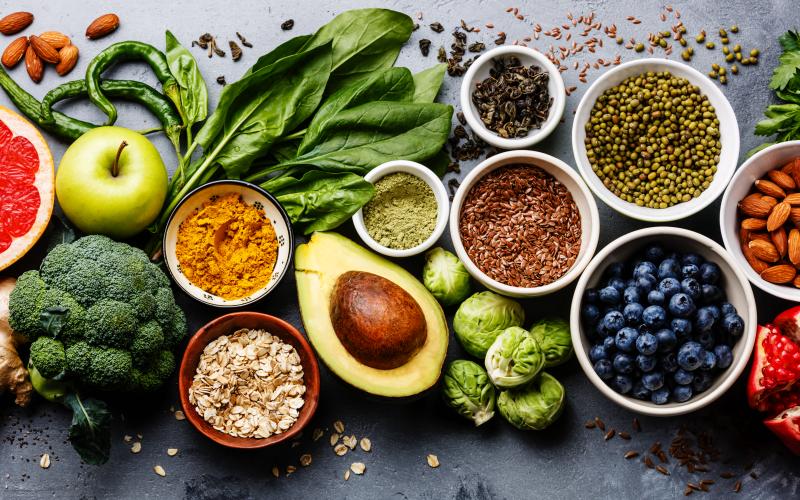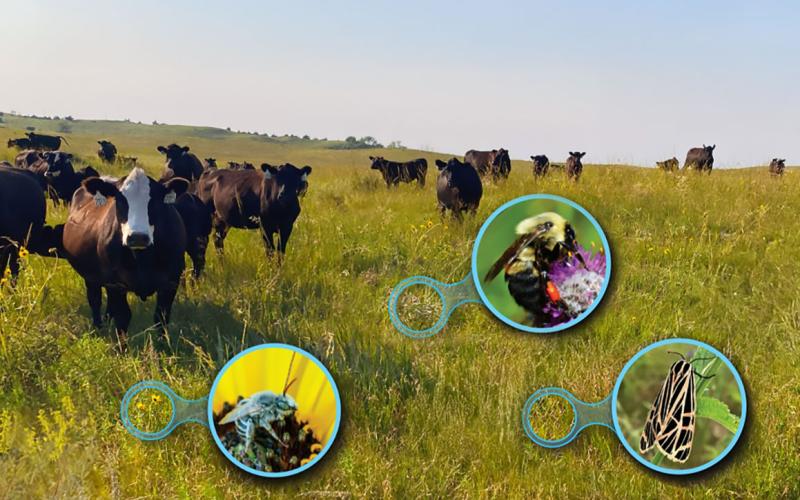Written collaboratively by Gemma Bastian, Samantha Schaap, Robin Buterbaugh, Nathania Knight, and Una Howe.
Many native prairie plants have been used medicinally for generations by the Indigenous peoples of the Northern Great Plains, including what is now known as South Dakota. Sweetgrass and white sagebrush are hardy perennials that have a variety of uses and deep historical significance.
Sweetgrass

Sweetgrass [Hierochloe odorata (L.) Beauv.] is known for its distinctive sweet smell, akin to vanilla. It grows across the Northern Great Plains in wetlands and by rivers and streams. Sweetgrass has a variety of cultural and medicinal uses among Indigenous people. The plant’s leaves can grow up to 30 inches, making it perfect for basket weaving. Many tribes drink sweetgrass tea to treat a variety of ailments, including tonsilitis, sore throat, congestion, and infections. Sweetgrass also has ceremonial importance and is dried and burned as incense for such occasions.
The key to sweetgrass’ characteristic fragrance and healing properties is a compound called coumarin. Coumarin is naturally occurring in many foods, like cinnamon. It is known to have many medicinal effects, particularly with reducing inflammation (swelling) and edema (fluid buildup). Coumarin is also an anti-coagulant and is the natural derivative of modern blood thinner medication. Therefore, consult your doctor before using sweetgrass for medicinal purposes, especially if you are on a blood thinning medication.
Due to its fragrance, sweetgrass is a natural tool for keeping areas smelling good and free from bugs. Some people hang up dried braids of sweetgrass leaves inside closets or in drawers to keep clothes fresh and ward off moths. Sweetgrass is a strong natural mosquito repellant that you can use to protect your yard or other areas.
Sweetgrass is a cool-season perennial. Seeds should be planted in late fall before hard frost sets in. Sweetgrass prefers full sun and moist, well-drained soil. This plant can be difficult to grow from seeds, so it is recommended to purchase a few plants and divide them after a couple of years. The best time to harvest is from late June to early July. However, note that the perennial should not be harvested in the first year after planting.
White Sagebrush

White sagebrush, (Artemisia ludoviciana Nutt.) is commonly referred to as white prairie sage or white sage and is another native plant that has a strong scent and medicinal and cultural value. White sage is used by many Indigenous people to treat stomach aches, headaches, and sinus problems, and as an insect repellant and deodorant. Some use it to treat sores and arthritis pain as well. The plant also carries significant ceremonial importance for many Indigenous people who burn it as incense for cleansing.
Research has found that white sage has antimicrobial and antioxidant properties. The plant’s leaves can be used to make essential oils that are diluted or diffused into the air. Some studies have shown that when given white sage extract, mice and humans with diabetes had better control over their blood sugar. Other studies have also suggested that white sage extract could help treat bacterial infections. White sage extract is typically safe for adults to ingest but may be harmful in large amounts. White sage extract should not be given to children without consulting a pediatrician first.
White sage seeds should also be planted in late fall. This perennial prefers full sun and medium to dry soil. It is recommended to harvest white sage leaves when they are the most aromatic, before they flower in mid to late summer (July-September).
Conclusion
Sweetgrass and white sage are both plants that are native to South Dakota and have many cultural and medicinal uses, especially among Indigenous peoples. Both plants could be used to treat symptoms of common illnesses. However, first consult with your doctor to make sure you are taking a safe dose that will not react with any medications you may take.
Sweetgrass and white sage are both wildflowers that grow throughout South Dakota, and some people choose to forage and harvest wild plants. If you are interested in foraging, it is important to read up on local laws and permissions about foraging in the place you would like to forage. This guide, while focused on the Great Lakes region, has lots of tips and considerations for ethical foraging. If you are non-Indigenous, it is also important to understand and acknowledge the Indigenous history of the land you wish to forage from, as these plants are culturally and spiritually important. This article from the North American Traditional Indigenous Food Systems (NATIFS) provides some Lakota perspectives on foraging traditional plants.
Both plants are relatively easy to grow in a home garden, too. However, do note that these plants are very aggressive and are not well suited to small spaces unless you can contain them. You can find seeds and transplants for these plants from distributors that sell native forbs (forb is a scientific name for these types of wildflowers). One such local seed distributor is Renovo Seed, based in Brookings, SD. Transplants can be purchased from the SDSU Native Plant Initiative or online native plant nurseries.
References
- Anaya-Eugenio G., Rivero-Cruz I., Rivera-Chavez J., and Mata R. (2014). Hypoglycemic properties of some preparations and compounds from Artemisia ludoviciana Nutt. Journal of Ethnopharmacology. 155(1): 416-425.
- Flores-Morales V., Villasana-Ruiz A.P., Garza-Veloz I., Gonzalez-Delgado S., and Martinez-Fierro M.L. (2023). Therapeutic Effects of Coumarins with Different Substitution Patterns. Molecules. 28(5): 2413.
- Rivero-Cruz I., Anaya-Eugenio G, Perez-Vasquez A., Martinez A.L., and Mata R. (2017). Quantitative Analysis and Pharmacological Effects of Artemisia ludoviciana Aqueous Extract and Compounds. Natural Product Communications. 12(10): 1531-1534.
- U.S. Department of Agriculture. Sweetgrass. Natural Resources Conservation Service Plant Guide. Accessed October 15, 2024.
- U.S. Department of Agriculture. White Sage. Natural Resources Conservation Service Plant Guide. Accessed October 15, 2024.
About the Native Plant Initiative
Native plants are the foundation that supports insects, pollinators (including bees), birds and wildlife.
Learn More

